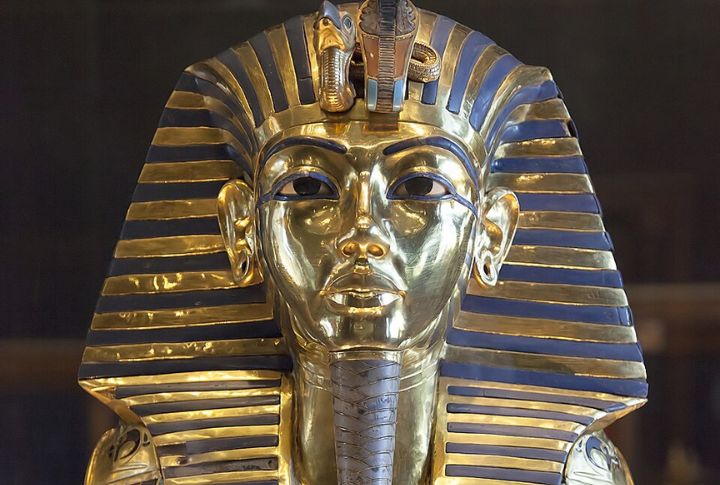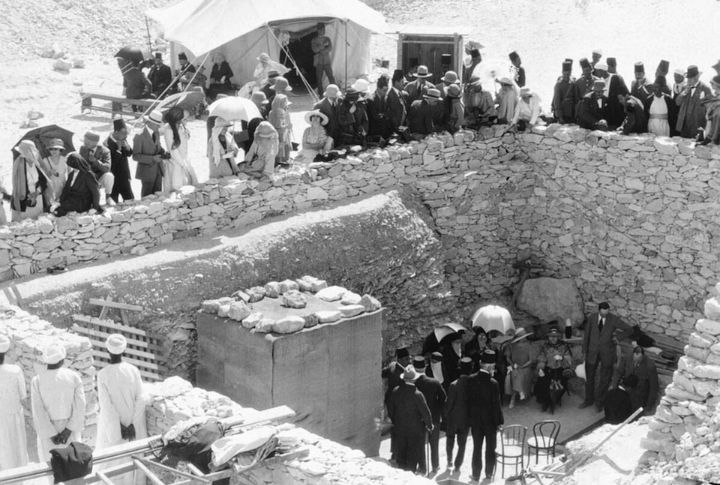
A royal tomb usually settles the story, yet the mummy inside Tutankhamun’s chamber keeps raising problems no one has fully resolved. Several details push experts to revisit long-held assumptions, and a handful of scientific observations add pressure to a debate that refuses to fade. If surprises in ancient history keep you reading, continue because the next pieces of evidence carry serious weight.
Repurposed Artifacts
Identity questions arise immediately upon examination of the burial goods. Key objects—shrines, beds, and canopic containers—were originally made for other regals before workers changed the names to Tutankhamun’s. A burial filled with reassigned items naturally raises doubt about who the tomb was meant to hold.
Death Mask Anomalies
Doubts sharpen quickly once the mask enters the discussion. Pierced ears suggest it first belonged to a woman, and the differing gold alloys point to more than one construction phase. Even the detached beard adds to the puzzle, leaving its original owner open to question.
Female-Oriented Tomb Design
Royal tombs typically reveal a future occupant’s status through their layout, yet KV62 sends mixed signals. A side-positioned burial chamber and tight room arrangement resemble designs linked to queens rather than kings. When the structure itself hints at a different owner, the mummy’s identity attracts sharper scrutiny.
Missing Heart
Nothing inside the coffin weakens certainty about the pharaonic figure meant to rest here more quickly than the absent heart. Mortuary workers preserved the organ for judgment, yet the chest contains nothing at all. Damage or haste may explain it, but neither possibility resolves the uncertainty tied to this resting place.
Charred Mummy Condition

A rare chemical reaction between heavy embalming oils and linen produced intense heat inside the coffin, leaving the mummy unnaturally charred. That level of damage appears nowhere else in the dynasty. When a royal body receives such irregular treatment, certainty about the true occupant naturally weakens.
Physical Complications In Identification
Efforts to match the mummy to known portraits face obstacles because the body shows abnormalities such as bone damage and foot deformities. These conditions also distort features once used for comparison. With essential traits altered or missing, linking the remains to Tutankhamun rests on evidence and feels fragmentary.
DNA Inconclusiveness
Genetic testing links the mummy to Tutankhamun’s relatives, though gaps in the damaged sequences limit how firmly the match can address the issue. Several findings rely on narrow genetic markers, which invites caution. DNA adds context, but it cannot override the uncertainty raised by the burial’s unusual features.
Iconographic Ambiguity
The chamber’s artwork uses basic scenes instead of the detailed, king-specific symbols seen in other royal tombs. That reduced level of imagery offers few clear markers for confirming who the tomb was meant for. With such limited visual cues, researchers lose the anchors needed for a confident conclusion.
Alleged Hoax By Carter
Howard Carter, the archaeologist who discovered King Tut’s tomb in 1922, has long been tied to rumors claiming he staged parts of the find or mishandled artifacts. No credible evidence supports these accusations. The tomb’s unusual layout and incomplete records fuel lingering theories, yet modern scholars focus more on the burial’s mysteries than on Carter himself.
Absence of Personal Markers
A king’s grave usually carries unmistakable personal touches, yet KV62 offers few items tied directly to Tutankhamun’s daily life or documented habits. Without objects that clearly belonged to him, the tomb loses an important method for confirming its occupant. This absence also leaves identity confidence thinner than expected.

